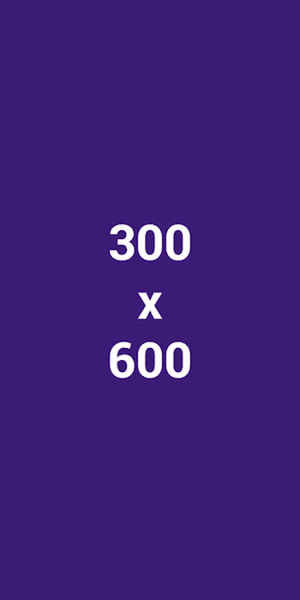“], “filter”: { “nextExceptions”: “img, blockquote, div”, “nextContainsExceptions”: “img, blockquote, a.btn, a.o-button”} }”>
New perk: Easily find new routes and hidden gems, upcoming running events, and more near you. Your weekly Local Running Newsletter has everything you need to lace up!
>”,”name”:”in-content-cta”,”type”:”link”}}”>Subscribe today.
Last week, the Boston Athletic Association (BAA) announced new rules for the 2027 Boston Marathon qualifying times, which said that some downhill marathons will be subject to an “adjustment”—in other words, a penalty—to help level the playing field. I’ve been analyzing piles of U.S. marathon data in an effort to predict Boston qualifying (BQ) cutoff times, and from this analysis, I found that about 8-12 percent of runners at Boston (in 2025) qualified via a steep downhill course.
First, it’s worth noting that runners have been complaining about net downhill race times counting towards a BQ for years, and in that sense, the new rules were a long time coming. But they were also announced abruptly, and they triggered a wide range of online responses.
The common thread in these reactions was that this would cause an upheaval in the sport and signal the end of downhill races. But will it? The answer is more nuanced if you let the numbers tell the story.
I examined the data to see just what this means for downhill races. Here, we’ll go through which gender and age categories will be impacted by the penalties the most, which races have the best and worst steepness-to-penalty ratio, and what you need to know before you sign up for a downhill marathon to capture a BQ.
What Are the New Rules for Downhill Qualifiers?
The BAA’s new rules, also known as the “downhill results index,” categorize races based on the change in elevation between the start and the finish line. To account for the benefits of downhill courses, time adjustments are applied based on total net elevation drop. The chart below outlines how qualifying times are affected by varying degrees of descent.
Net Elevation Drop
Qualification Adjustment
Less than 1,500 feet
No adjustment
1,500 – 2,999 feet
+ 5:00 adjustment
3,000 – 5,999 feet
+ 10:00 adjustment
6,000+ feet
Ineligible for qualification
The ceiling—6,000 feet of drop—is so high that no active races fall into that category. There are no certified courses in the United States with that much change in elevation. While there was at least one novelty race in Europe that fit this criterion, it’s no longer active.
That leaves three distinct categories of races, in practice:
The smallest category is those subject to a 10:00 adjustment. This includes several REVEL races (Big Cottonwood, Mt. Charleston, Big Bear), Mt. Nebo, and a handful of other tiny races.
The next category is those subject to a 5:00 adjustment. The biggest race in this group is the St. George Marathon, but it also includes the Tunnel races in Washington, the Utah Valley Marathon, the Las Vegas Marathon, and some others.
Finally, there is a sizable group of downhill races that are not impacted at all. This includes Mesa, Colorado, Ventura, and several others. These races are steep enough to convey a modest advantage, but they aren’t steep enough to incur a time adjustment.
Historically Top Marathons to BQ Affected by the Rules Change
Race
Location
Adjustment
REVEL Mt. Charleston
Nevada
+10 minutes
REVEL Big Bear
California
+10 minutes
Light At The End Of The Tunnel
Washington
+5 minutes
Tunnel Vision
Washington
+5 minutes
Tunnel Lite
Washington
+5 minutes
Jack and Jill Downhill
Washington
+5 minutes
What Do These Changes Mean For Runners at Downhill Races?
If you think these changes necessarily mean the end of downhill marathons, think again. First, a substantial number of runners can still notch qualifying times at a downhill marathon despite the time adjustments.
I analyzed the results of downhill races over the last two years, and while these adjustments would reduce the number of qualifiers, they would not eliminate them. In the qualifying period for the 2025 Boston Marathon, there were about 5,000 qualifiers. If the time adjustments had been applied to those results, that number would have fallen by about 40 percent.
So far in the qualifying period for the 2026 Boston Marathon, there are 2,500 total qualifiers from downhill races. Again, the time adjustments would reduce that number by about 40 percent.
Flip that around, and about 60percent of the existing runners scoring qualifying times at downhill races would still qualify even if they were subject to a 5:00 or 10:00 adjustment.
Which Runners Are Most Likely to Qualify?
In 2025, almost 2,000 runners qualified for the 2025 Boston Marathon at a downhill race. The visual below shows which of them would still have qualified if their results were subject to a 5:00 or 10:00 adjustment.
Younger runners are less likely to make it through, while older runners are more likely to continue to qualify. In part, this could be related to the fact that older runners have relatively softer qualifying times, and they are more likely to qualify anyway.
But it’s also probably driven by the fact that the adjustment is a fixed amount of time against the increasing scale of cutoffs, and the impact of that time hits harder when you are already running a faster time. A 5:00 adjustment is going to be harder to overcome for a 30-year-old man who needs a 2:55 to qualify compared to a 60-year-old woman who needs a 4:20. That’s a 2.86 percent drop for a 30-year-old man, but a 1.92 percent drop for a 60-year-old woman. Women also tend to fare better than men of a similar age, which could also be explained by the fact that the time differential is a smaller relative to their qualifying times.
If you dig deeper into the data on who would qualify despite the adjustments, there’s also a difference based on the race at which a runner qualified. Of runners subject to a 5:00 adjustment, only about 25 percent would have been eliminated. But of runners subject to a 10:00 adjustment, that number jumps to 50 percent.
The differences between age groups were also more pronounced when you break it down by the steepness of the race. For example, if you look at men who were subject to a 5:00 adjustment, 57 percent of runners under 45 would have been eliminated, compared to 40 percent of older runners. But on the steeper courses, a whopping 80 percent of the younger runners would fail to qualify, compared to 57 percent of the older runners.
Of runners who qualified for the Boston Marathon at a downhill marathon, 5:00 to 10:00 minutes was about the average improvement that runners saw from running downhill. But the magnitude of that improvement varied quite a bit. Some people saw much greater benefits from a downhill race, while others saw more marginal benefits.
What To Consider Before Signing Up For a Downhill Marathon to BQ
At the end of the day, the BAA’s new downhill results index will reduce the number of runners who qualify for downhill marathons. But it doesn’t eliminate the possibility, and some runners will still be able to eke out an advantage, thanks to gravity and their specific strength at downhill marathons compared to those who see little advantage in that type of course.
Here are four key things to consider before attempting to use a downhill race to qualify for Boston.
1. How old are you?
Based on the data, runners above 45 are going to have an easier time overcoming the new penalties. Runners in their 20s and 30s would probably be better off trying to maximize their potential at a flat race.
2. How steep is the race?
In general, you’re likely to have more luck at a moderately downhill race with a 5:00 adjustment than at a steeper race with a 10:00 adjustment.
And each category is also a broad range. For example, St. George Marathon and REVEL White Mountains are at the top end of their category, with a net loss of 3,057 feet and 2,694 feet, respectively. Meanwhile, the Cascade Express and the Super Series Marathon Courses both have a 1,500-foot net drop. But all four races are subject to the same 5:00 adjustment. So if you’re betting on your ability to fly downhill to a BQ, you probably want to choose the steepest race with the least amount of penalty.
3. How prepared are you to race downhill?
Not everyone responds the same to a net drop in elevation, and you can maximize your chances by training specifically for this. Run downhill and spend time at your goal marathon pace. If that’s not possible because you live in a flat area, you might be better off targeting a flatter race.
4. Should you seek out the best of both worlds?
Choose a race with less than 1,499 feet of elevation loss, like Mesa or Ventura, and you can get a modest benefit without suffering from a time adjustment at all.
The next few years could bring additional changes. But in the meantime, there will still be many runners who qualify for Boston thanks to downhill marathons.














